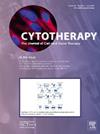Role of mesenchymal stromal cell secretome on recovery from cellular senescence: an overview
IF 3.7
3区 医学
Q2 BIOTECHNOLOGY & APPLIED MICROBIOLOGY
引用次数: 0
Abstract
Cellular senescence is intricately linked with numerous changes observed in the aging process, including the depletion of the stem cell pool and the decline in tissue and organ functions. Over the past three decades, efforts to halt and reverse aging have intensified, bringing rejuvenation closer to reality. Current strategies involve treatments using stem cells or their derivatives, such as the secretome. This article aims to highlight key points and evaluate the utilization of secretome derived from mesenchymal stromal cells (MSCs) as an antisenescent approach. Employing a quasi-systematic research approach, the authors conducted a comprehensive analysis based on a search algorithm targeting the in vitro effects of MSC-derived secretome on rescuing cells from a senescent state. Reviewing 39 articles out of 687 hits retrieved from PubMed and Scopus without a time limit, the authors synthesized information and identified common types of MSC-tissue sources utilized (including bone marrow-MSCs, umbilical cord-MSCs, iPSC-derived MSCs, adipose tissue-MSCs, dental pulp-MSCs, amniotic membrane-MSCs, placenta-MSCs, gingival-MSCs, urine-MSCs, and commercially available MSC lineages) from both human and other species (such as mice and rats). The authors also examined the forms of secretome tested (including conditioned media and extracellular vesicles), the cell types treated (MSCs or other cell types), methods/biomarkers of monitoring senescence/rejuvenation, and the mechanisms involved. Ultimately, this review underscores the proof-of-principle of the beneficial effects of MSC-derived secretome in reversing cellular senescence across various cell types. Such insights might aid the scientific community in designing improved in vitro and in vivo assays for future research and clinical validation of this promising cell-free therapy.
间充质基质细胞分泌组在细胞衰老恢复中的作用综述。
细胞衰老与衰老过程中观察到的许多变化有着复杂的联系,包括干细胞池的消耗和组织和器官功能的下降。在过去的三十年里,遏制和逆转衰老的努力不断加强,使返老还老更接近现实。目前的治疗策略包括使用干细胞或其衍生物,如分泌组。本文旨在重点介绍间充质基质细胞(MSCs)分泌组作为抗衰老方法的应用。作者采用准系统的研究方法,基于搜索算法对msc衍生分泌组在体外拯救细胞衰老状态的作用进行了综合分析。在没有时间限制的情况下,作者从PubMed和Scopus检索了687篇文章中的39篇,综合了信息并确定了来自人类和其他物种(如小鼠和大鼠)的常见类型的间充质干细胞组织来源(包括骨髓间充质干细胞、脐带间充质干细胞、ipsc衍生的间充质干细胞、脂肪组织间充质干细胞、牙髓间充质干细胞、羊膜间充质干细胞、胎盘间充质干细胞、牙龈间充质干细胞、尿液间充质干细胞和商业上可用的间充质干细胞谱系)。作者还研究了分泌组测试的形式(包括条件培养基和细胞外囊泡),处理的细胞类型(msc或其他细胞类型),监测衰老/返老还老的方法/生物标志物,以及所涉及的机制。最后,这篇综述强调了mscs衍生分泌组在逆转各种细胞类型的细胞衰老方面的有益作用的原理证明。这些见解可能有助于科学界为未来的研究和临床验证这种有前途的无细胞疗法设计改进的体外和体内试验。
本文章由计算机程序翻译,如有差异,请以英文原文为准。
求助全文
约1分钟内获得全文
求助全文
来源期刊

Cytotherapy
医学-生物工程与应用微生物
CiteScore
6.30
自引率
4.40%
发文量
683
审稿时长
49 days
期刊介绍:
The journal brings readers the latest developments in the fast moving field of cellular therapy in man. This includes cell therapy for cancer, immune disorders, inherited diseases, tissue repair and regenerative medicine. The journal covers the science, translational development and treatment with variety of cell types including hematopoietic stem cells, immune cells (dendritic cells, NK, cells, T cells, antigen presenting cells) mesenchymal stromal cells, adipose cells, nerve, muscle, vascular and endothelial cells, and induced pluripotential stem cells. We also welcome manuscripts on subcellular derivatives such as exosomes. A specific focus is on translational research that brings cell therapy to the clinic. Cytotherapy publishes original papers, reviews, position papers editorials, commentaries and letters to the editor. We welcome "Protocols in Cytotherapy" bringing standard operating procedure for production specific cell types for clinical use within the reach of the readership.
 求助内容:
求助内容: 应助结果提醒方式:
应助结果提醒方式:


